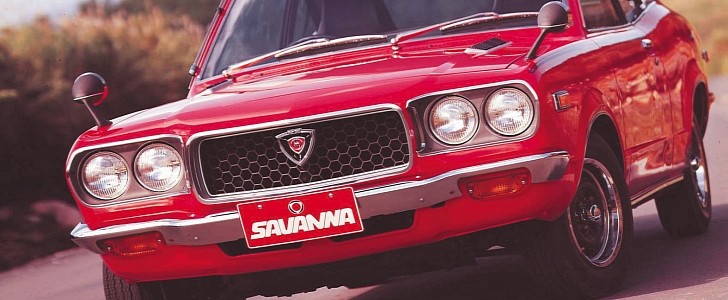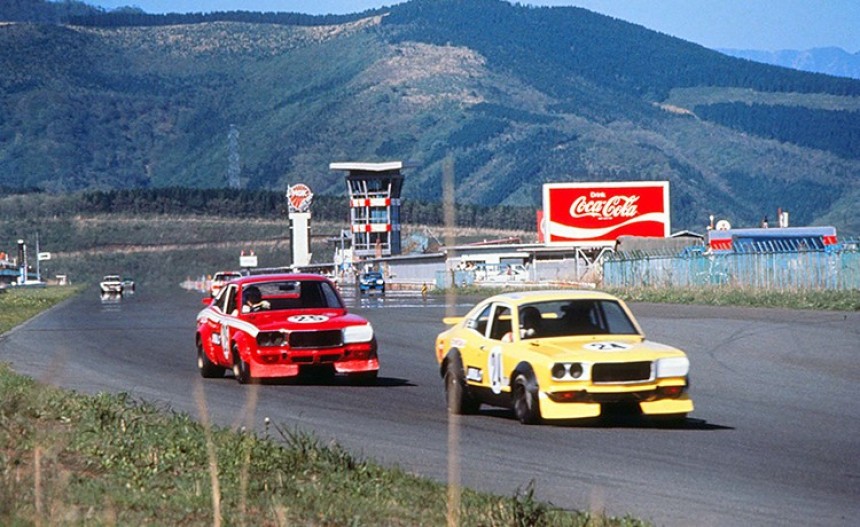The Mazda RX-7, especially the third-generation model, is largely responsible for making the rotary engine popular. It's arguably the most iconic Mazda out there, but that's because we forget about the RX-3. And we should stop doing that!
Why is the RX-3 a car that we should hang in posters on our walls? Well, for starters, it's the car that actually introduced rotary engines to the world. Where NSU and Mercedes-Benz failed, Mazda succeeded and managed to solve many of the rotary engine's design issues and made it largely available to drivers.
Yes, the RX-3 wasn't the first rotary-powered Mazda. The Japanese company debuted its first Wankel engine with the Cosmo sports car in 1967, four years before the RX-3 rolled out. But the latter sold more than 280,000 units globally, more than any other rotary vehicle before it. What's more, the RX-3 was outsold only by the first-generation RX-7. Simply put, it's the RX-3 that made rotary engines a thing.
Second, the RX-3 is a pretty car. Maybe not as appealing in sedan and station wagon forms, but the two-door coupe is 1970s Japanese perfection. Not as boxy as the Nissan Skyline GT-R and not as pointy as the Datsun 240Z, the RX-3 is a perfect combination of angular and organic design cues.
But Mazda didn't stop there. The 10A rotary was followed by the 12A, which developed 123 horsepower in 1972 and 128 horses from 1973 onward. It's not much if we compare that to modern small-displacement engines, but let's keep in mind that the Mustang's 5.0-liter V8 was generating 140 horsepower in 1975. The RX-3 was also only marginally less powerful than a base Porsche 911.
The RX-3 scored three titles from 1972 to 1975 in that series and won Australia's Bathurst 1000 in its class in 1974 and 1975. The RX-3 was successful in North America, too, particularly in SCCA and IMSA competition. It's largely known as a "giant killer" for its ability to outrun cars with larger and notably more powerful engines.
Since the RX-3 tips the scales at less than 950 kg (2,094 pounds), it's a great project for classic car racing and even for drag strip events. But these kinds of projects are better left for high-mileage and damaged examples. Well-maintained RX-3s can be expensive nowadays. The coupe is finally getting some of the love it deserves, and low-mileage models can fetch more than $30,000.
Not yet convinced that you should be worshipping the RX-3 as the greatest rotary engine icon? Maybe this video of a race-spec coupe screaming on the Nürburgring will seal the deal.
Yes, the RX-3 wasn't the first rotary-powered Mazda. The Japanese company debuted its first Wankel engine with the Cosmo sports car in 1967, four years before the RX-3 rolled out. But the latter sold more than 280,000 units globally, more than any other rotary vehicle before it. What's more, the RX-3 was outsold only by the first-generation RX-7. Simply put, it's the RX-3 that made rotary engines a thing.
Second, the RX-3 is a pretty car. Maybe not as appealing in sedan and station wagon forms, but the two-door coupe is 1970s Japanese perfection. Not as boxy as the Nissan Skyline GT-R and not as pointy as the Datsun 240Z, the RX-3 is a perfect combination of angular and organic design cues.
It was impressively powerful for the era
The RX-3's first Wankel motor was a tiny 1.0-liter, but it was surprisingly powerful. Rated at 104 horsepower in most markets, it generated more oomph than the regular four-cylinder mills that Mazda offered at the time. And it was on par with the range-topping 1.6-liter four-banger.But Mazda didn't stop there. The 10A rotary was followed by the 12A, which developed 123 horsepower in 1972 and 128 horses from 1973 onward. It's not much if we compare that to modern small-displacement engines, but let's keep in mind that the Mustang's 5.0-liter V8 was generating 140 horsepower in 1975. The RX-3 was also only marginally less powerful than a base Porsche 911.
It dethroned the mighty Nissan Skyline GT-R
Well, of course, Mazda took the RX-3 racing. It was the ultimate goal in proving that the rotary engine was reliable. But it was more than just a "look, we can race it too" campaign. The RX-3 was a successful race car. It debuted with a win at the Fuji 500, and in 1972, it put an end to the Nissan GT-R's domination in the Japanese touring car championship.They can make great JDM builds
Like most Japanese coupes out there, the RX-3 had a lot of potential under the hood. Mazda managed to tune the rotary engine up to more than 200 horsepower in the race-spec RX-3, but some racers are known to deliver in excess of 500 horses. Much like the RX-7 that followed, the RX-3 found its way into tuning shops and some of them rolled out coupes with up to 1,000 horsepower.Since the RX-3 tips the scales at less than 950 kg (2,094 pounds), it's a great project for classic car racing and even for drag strip events. But these kinds of projects are better left for high-mileage and damaged examples. Well-maintained RX-3s can be expensive nowadays. The coupe is finally getting some of the love it deserves, and low-mileage models can fetch more than $30,000.










